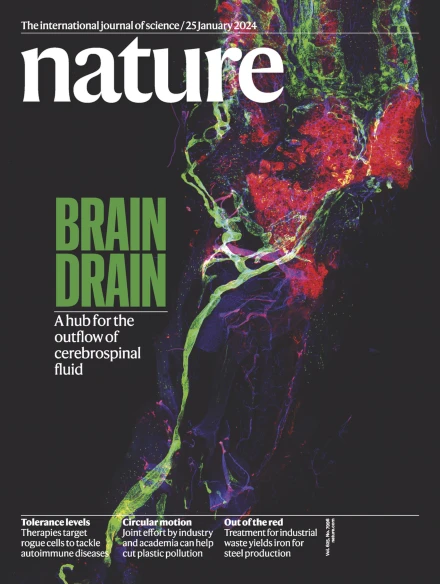NEURD offers automated proofreading and feature extraction for connectomics
IF 50.5
1区 综合性期刊
Q1 MULTIDISCIPLINARY SCIENCES
引用次数: 0
Abstract
We are in the era of millimetre-scale electron microscopy volumes collected at nanometre resolution1,2. Dense reconstruction of cellular compartments in these electron microscopy volumes has been enabled by recent advances in machine learning3–6. Automated segmentation methods produce exceptionally accurate reconstructions of cells, but post hoc proofreading is still required to generate large connectomes that are free of merge and split errors. The elaborate 3D meshes of neurons in these volumes contain detailed morphological information at multiple scales, from the diameter, shape and branching patterns of axons and dendrites, down to the fine-scale structure of dendritic spines. However, extracting these features can require substantial effort to piece together existing tools into custom workflows. Here, building on existing open source software for mesh manipulation, we present Neural Decomposition (NEURD), a software package that decomposes meshed neurons into compact and extensively annotated graph representations. With these feature-rich graphs, we automate a variety of tasks such as state-of-the-art automated proofreading of merge errors, cell classification, spine detection, axonal-dendritic proximities and other annotations. These features enable many downstream analyses of neural morphology and connectivity, making these massive and complex datasets more accessible to neuroscience researchers. Neural Decomposition (NEURD) is a software package that decomposes neuronal data from high-resolution electron microscopy volumes into feature-rich graph representations to facilitate analysis for neuroscience research.


NEURD为连接组学提供自动校对和特征提取
我们正处于以纳米分辨率收集的毫米级电子显微镜体积的时代。机器学习的最新进展使这些电子显微镜体积中的细胞室的密集重建成为可能3,4,5,6。自动分割方法产生异常准确的细胞重建,但仍然需要事后校对,以产生没有合并和分裂错误的大型连接体。这些神经元的精细3D网格包含了多个尺度的详细形态学信息,从轴突和树突的直径、形状和分支模式,到树突棘的精细结构。然而,提取这些特性可能需要大量的工作来将现有的工具拼凑到自定义工作流中。在这里,基于现有的用于网格操作的开源软件,我们提出了神经分解(NEURD),这是一个将网格神经元分解为紧凑且广泛注释的图表示的软件包。有了这些功能丰富的图形,我们可以自动执行各种任务,如最先进的合并错误自动校对、细胞分类、脊柱检测、轴突-树突邻近度和其他注释。这些特性使神经形态学和连通性的下游分析成为可能,使神经科学研究人员更容易获得这些庞大而复杂的数据集。
本文章由计算机程序翻译,如有差异,请以英文原文为准。
求助全文
约1分钟内获得全文
求助全文
来源期刊

Nature
综合性期刊-综合性期刊
CiteScore
90.00
自引率
1.20%
发文量
3652
审稿时长
3 months
期刊介绍:
Nature is a prestigious international journal that publishes peer-reviewed research in various scientific and technological fields. The selection of articles is based on criteria such as originality, importance, interdisciplinary relevance, timeliness, accessibility, elegance, and surprising conclusions. In addition to showcasing significant scientific advances, Nature delivers rapid, authoritative, insightful news, and interpretation of current and upcoming trends impacting science, scientists, and the broader public. The journal serves a dual purpose: firstly, to promptly share noteworthy scientific advances and foster discussions among scientists, and secondly, to ensure the swift dissemination of scientific results globally, emphasizing their significance for knowledge, culture, and daily life.
 求助内容:
求助内容: 应助结果提醒方式:
应助结果提醒方式:


